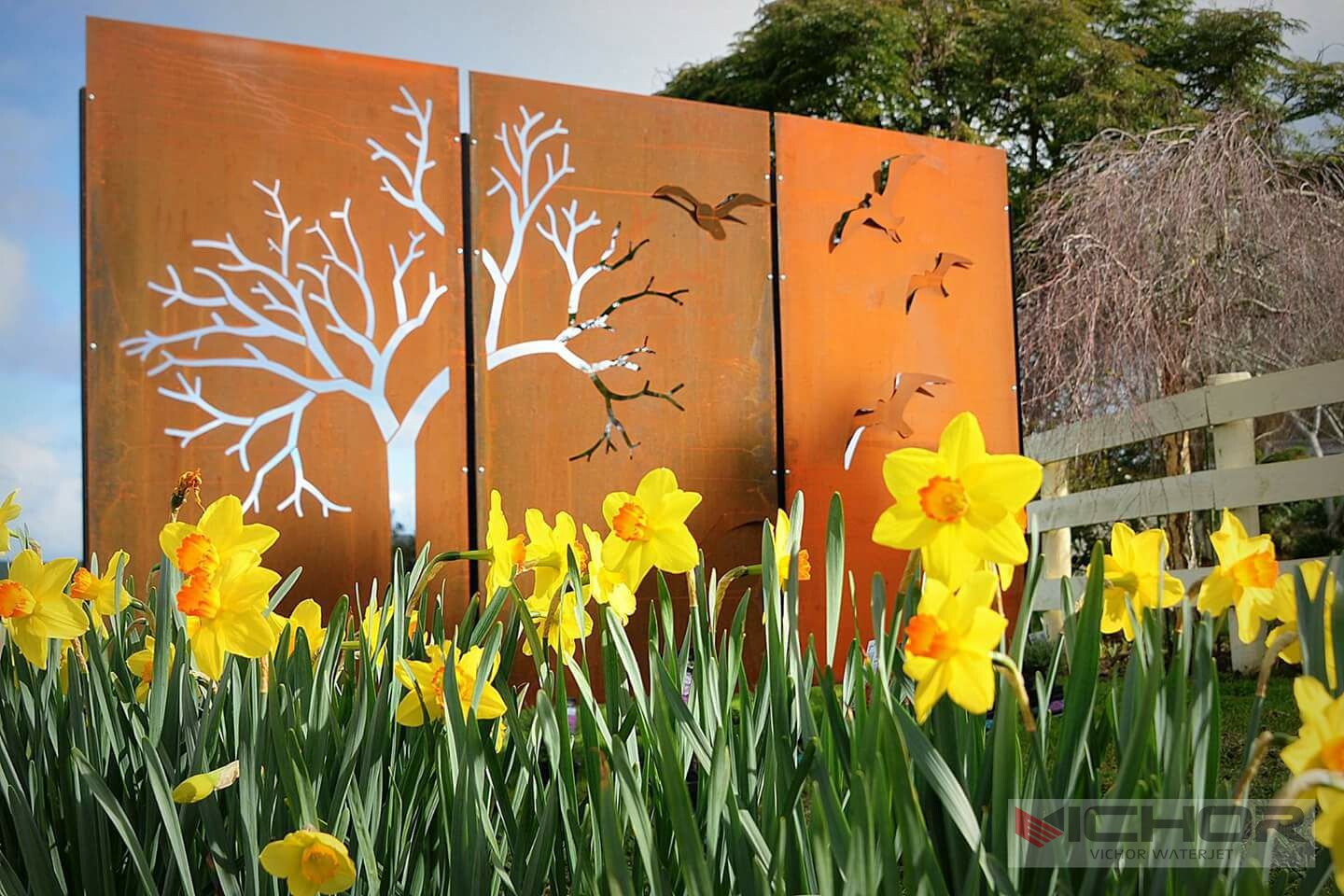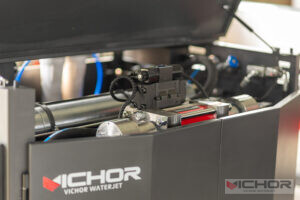
5 Essential Things You Need to Know About Waterjet Tables in Modern Manufacturing
Waterjet tables have revolutionized the manufacturing and fabrication industries, offering unparalleled precision and versatility in cutting a wide range of materials. Whether you’re working with metal, stone, glass, or composites, a waterjet table provides a cold-cutting process that minimizes material distortion and heat-affected zones. In this article, we’ll dive into the key aspects of waterjet tables, including how they operate, their applications, features, types, and pricing. As a leader in the field, VICHOR has been at the forefront of waterjet cutting technology, providing innovative solutions for businesses worldwide. By the end, you’ll have a comprehensive understanding of why investing in a waterjet table could be a game-changer for your operations.
How Does a Waterjet Table Work?
A waterjet table operates by using high-pressure water, often mixed with abrasive materials, to cut through various substances. The process begins with a pump that pressurizes water to extreme levels—typically between 60,000 and 90,000 psi. This high-pressure stream is then focused through a small nozzle, creating a precise cutting tool. When abrasives like garnet are added, the waterjet table can slice through hard materials such as titanium or granite with ease. The CNC (Computer Numerical Control) system guides the waterjet cutting head along the table, ensuring accurate cuts based on digital designs. This method is highly efficient and environmentally friendly, as it doesn’t produce harmful fumes or heat, making it a preferred choice in industries requiring clean, precise cuts. VICHOR’s waterjet tables, for instance, incorporate advanced control systems that enhance accuracy and reduce waste, showcasing why this technology is so impactful.
Key Applications of Waterjet Tables in Various Industries
The versatility of a waterjet table makes it indispensable across multiple sectors. In aerospace, waterjet cutting is used to shape complex components from composites and alloys without compromising structural integrity. The automotive industry relies on waterjet tables for prototyping and producing parts with tight tolerances. In architecture and design, these tables cut intricate patterns in stone, tile, and glass for stunning visual effects. Additionally, the food industry employs pure waterjet systems (without abrasives) to slice products like pastries and frozen foods hygienically. VICHOR’s waterjet tables have been implemented in these fields, demonstrating their adaptability and efficiency. By using a waterjet table, companies can achieve higher productivity and reduce material waste, leading to cost savings and improved sustainability.
Essential Features to Look for in a Waterjet Table
When selecting a waterjet table, several features are critical for optimal performance. First, consider the cutting speed and accuracy—high-end models from brands like VICHOR offer precision within ±0.1 mm, which is vital for detailed work. The table size is another factor; larger tables accommodate bigger materials, boosting throughput. Modern waterjet tables often include user-friendly software for seamless design integration and real-time monitoring. Durability is key, so look for robust construction materials that withstand harsh environments. Additionally, safety features such as emergency stops and enclosed cutting areas protect operators. VICHOR’s waterjet cutting systems, for example, incorporate intelligent water management to reduce consumption, aligning with eco-friendly practices. By evaluating these aspects, you can choose a waterjet table that meets your specific needs and enhances your operational efficiency.
Different Types of Waterjet Tables Explained
Waterjet tables come in various configurations to suit different applications. The two main types are pure waterjet and abrasive waterjet systems. Pure waterjet tables use only high-pressure water for cutting softer materials like foam or rubber, making them ideal for industries like packaging. Abrasive waterjet tables, on the other hand, mix water with garnet or other abrasives to handle hard substances such as metals and ceramics. In terms of design, gantry-style waterjet tables are common for large-scale projects, offering wide cutting areas, while smaller benchtop models are perfect for workshops with space constraints. VICHOR provides a range of options, including custom waterjet tables tailored to unique requirements. Understanding these types helps you invest in the right system, whether for heavy-duty manufacturing or delicate artistic work.

Understanding the Cost: Waterjet Table Pricing Guide
The price of a waterjet table can vary widely based on factors like size, features, and brand. Entry-level models might start around $50,000, while high-end industrial systems from companies like VICHOR can exceed $200,000. Key cost drivers include the pump’s horsepower, table dimensions, and additional software integrations. For instance, a waterjet table with advanced CNC controls and larger cutting beds will command a higher price. Operating costs also play a role—abrasive materials, maintenance, and energy consumption add to the total expense. However, the long-term benefits, such as reduced waste and increased productivity, often justify the investment. VICHOR offers financing options and support services to make waterjet cutting technology accessible. By assessing your budget and needs, you can find a waterjet table that delivers excellent value.
Why Choose VICHOR for Your Waterjet Table Needs?
VICHOR has established itself as a trusted name in the international waterjet cutting arena, known for innovation and reliability. Their waterjet tables feature state-of-the-art technology, such as adaptive control systems that optimize cutting paths for efficiency. With a global support network, VICHOR ensures customers receive timely maintenance and training, minimizing downtime. The brand’s commitment to sustainability is evident in their energy-efficient designs, which reduce environmental impact. Many industries prefer VICHOR waterjet tables for their durability and precision, leading to enhanced product quality. If you’re considering a waterjet table, VICHOR’s expertise and comprehensive product range make them a top choice for businesses aiming to stay competitive.
Frequently Asked Questions About Waterjet Tables
Q1: What materials can a waterjet table cut?
A1: A waterjet table can cut a wide variety of materials, including metals like steel and aluminum, stones such as granite and marble, glass, ceramics, plastics, and composites. The versatility of waterjet cutting makes it suitable for many industries, from manufacturing to art.
Q2: How accurate is waterjet cutting compared to other methods?
A2: Waterjet cutting is highly accurate, often achieving tolerances within ±0.1 mm, which is comparable to laser cutting but without the heat distortion. This makes waterjet tables ideal for precision work where material integrity is crucial.
Q3: What maintenance does a waterjet table require?
A3: Regular maintenance for a waterjet table includes checking the high-pressure pump, replacing nozzles and seals, and cleaning the abrasive delivery system. Brands like VICHOR provide detailed schedules and support to ensure longevity and optimal performance.
Q4: Can waterjet tables be used for 3D cutting?
A4: Yes, advanced waterjet tables with multi-axis capabilities can perform 3D cutting, allowing for complex shapes and bevels. This is particularly useful in aerospace and automotive applications where intricate designs are needed.
Q5: How does the cost of operating a waterjet table compare to other cutting technologies?
A5: While the initial investment in a waterjet table might be higher than some methods, operating costs are often lower due to reduced energy consumption and minimal waste. Waterjet cutting also eliminates the need for secondary processes like deburring, saving time and money in the long run.
In summary, a waterjet table is a powerful tool that can transform your manufacturing processes, offering precision, versatility, and efficiency. By considering the insights shared here and exploring options from leaders like VICHOR, you can make an informed decision that drives your business forward.
continue reading
Related Posts
- 1350 words6.8 min read


